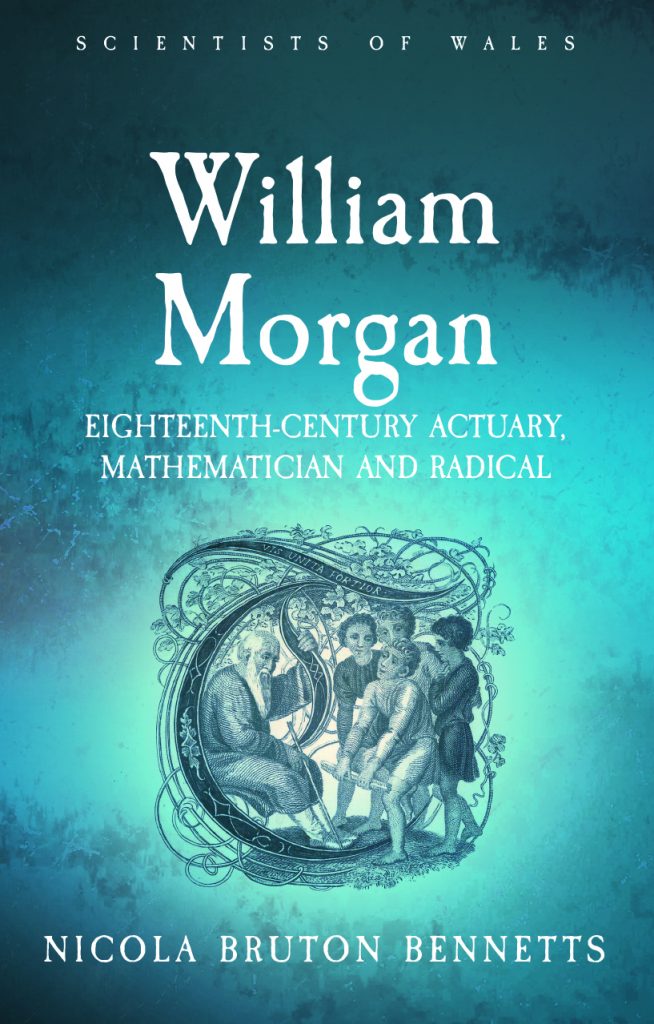
Nicola Bruton Bennetts introduces William Morgan: Eighteenth-Century Actuary, Mathematician and Radical.
This biography began in a tea caddy, part of a legacy from a maiden aunt. A beautiful mahogany tea caddy, inside which was a clutch of letters – sepia writing on brittle, snuff-coloured paper, shedding new light on the life of my great-great-great-grandfather William Morgan (1750–1833).
I already knew the main facts of his life story. When his club foot meant failure as a doctor – his patients had no faith in a medic who couldn’t heal himself – he reinvented himself. As an actuary, he became so successful that he is known today as the ‘father of the actuarial profession’, and his papers on the subject earned him the Copley medal, the Royal Society’s most prestigious award.
Morgan’s letters, charming in themselves, give revealing insights to his private life. My favourite is written from Bridgend to his younger daughter, Susan, whom he addresses as ‘My dear little Maid’. Written during a visit to his sisters and their families, he tells Susan about an outing (nineteen strong) to Southerndown, where they ‘dined upon the rocks’ – what a wonderful way to describe a picnic – and sends his love to 5-year-old William, thanking him for sharpening his tools (under supervision, I hope, and I wonder what tools they were). The reference to them is a reminder of wider interests and a fascination by electricity – not, like some of his contemporaries, mounting flashy displays of clever tricks, but engaging in serious study. It was in one of his experiments that he recorded ‘a beautiful green light’, and scientists now recognise that he had unwittingly created an X-ray tube.
Like his uncle Richard Price, William Morgan moved in politically radical circles. His friends included Benjamin Franklyn, Joseph Priestley, Thomas Paine and the flamboyant activist John Horne Tooke. If confirmation of this were needed, it is found in an invitation to Horne Tooke’s private funeral and, chillingly, in a subpoena to appear at Horne Tooke’s 1794 trial for High Treason (the acquittal was a close call, but Morgan was by then a marked man who knew he risked imprisonment in the Tower for his outspoken views).
Morgan refused to be muzzled by Pitt’s 1795 ‘Gagging Acts’, and in his publications continued to criticise the government for mismanagement of the economy and for obfuscation – words sometimes as relevant today as they were two hundred years ago. The final letter in my collection is to his sister, written when he was eighty-one, his handwriting as firm as ever, and his mind as sharp with comments about parliamentary progress of the Reform Bill.
The tea caddy legacy proved more than a treasure trove. It contained puzzling clues, which took some sleuthing to understand – what was the meaning of the red sash with a flashy rosette? What about the angry letter to his son-in-law, Benjamin Travers? And what about the fragment of a letter from Charles Babbage? The answers help to complete the picture of a very remarkable man.
Nicola Bruton Bennetts is an independent scholar with a background in teaching and journalism.


